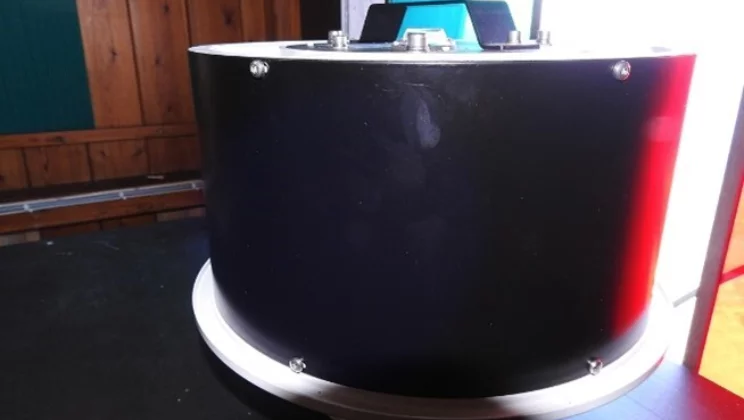For almost a century, Esbjerg Lighthouse has been guiding ships to enter the harbour safely, using light signals in an array of colours. Professionals describe it and other lighthouses as indispensable.
You can cram modern ships with navigation systems, GPSs and other positioning aids. When they are approaching the port of Esbjerg, they rely on the coloured lights from a small unassuming lighthouse, standing a mere 4.5 metres in height and situated on the pier between the commercial harbour and the fishing harbour since 1923.
If you take a stroll and turn left along Vagervej before the old auction hall and follow the quay past the cold stores and a tank store, you will come to the building with the distinctive red band on top of the light-coloured plates, which have just been replaced. The nearest neighbour is Esbjerg Rescue Station, whose manager, Anders Gehring Rasmussen, is in no doubt just how important Esbjerg Lighthouse is to shipping.
“For navigation reasons, we can’t do without either Esbjerg Lighthouse or Strandby Lighthouse, which is situated by Esbjerg Shipyard. There’ll be cross words, if a bulb has blown or the lighthouse is otherwise out of order. It must be sorted out by the next morning,” says Anders Gehring Rasmussen, who has a long maritime career himself.
The lighthouse never lets you down
The cross words could be echoed by pilot Steen Madsen of the pilot company DanPilot:
“We use the lighthouse every single day. Esbjerg Lighthouse is a sector lighthouse which uses light beams to guide ships to position themselves correctly in the shipping channel. Buoys can get under water or out of position in strong currents and during ice winters. You can’t count on them, but the lighthouse never lets you down,” he says.
The ships’ path from the 0 buoy and through the entrance is first in the white lighthouse line of three lighthouses, so they hit the 200-metre-wide channel, and then follows the green and red lighthouse line. After the break in the channel, the pilot takes over and uses the sector lighthouses, Strandby Lighthouse and Esbjerg Lighthouse.
Esbjerg Lighthouse’s sharp gaze does not fail when it intensifies its light after sunset. In white light, the ship lies perfectly in the middle of the channel, which is at least 10.3 metres deep at low tide. If the light is red, the position is too far port, and if it is green, it is too far starboard. In the evening, the pier lights indicate where the ship is in relation to the harbour basins.

Esbjerg Lighthouse's old lantern from that time, they directed the ships.
Extra safety measure
A lighthouse’s light cycle is referred to as its character, and such can be a test of wit to understand. ‘Oc’, for example, indicates that there are more bright than dark periods, and Esbjerg Lighthouse, which eclipses twice in twelve seconds, is one of them.
Surveyor Torben Bach Sørensen, Danish Maritime Authority, monitors over thirty lighthouses from Lyngvig on Holmsland Dunes and down the coasts, including Vejle Bay and Flensburg Bay.
“Although there are many aids on board ships, we keep the lighthouses as an extra safety measure. They are also important for oil and gas platforms, which should preferably be in the middle of the shipping channel when towed into port. I’m always told when something’s wrong, but now it’s not the bulbs that are burning out, because we’ve got LED lights,” he says.
As a so-called ‘B’ lighthouse, faults at Esbjerg Lighthouse must be repaired “at the earliest opportunity”.
The pesky break
According to Bach Sørensen, Esbjerg is well covered with nine land-based and three sea-based lighthouses. It is considered one of the more demanding ports to sail into because of the pesky break in the channel on the other side of the Skallingen peninsula. If you sail straight on that stretch, you risk grounding – which has happened in the past.
Back in the 1990s, harbour assistant Kurt Mathiesen sailed dredgers and used Strandby Lighthouse and Esbjerg Lighthouse on a daily basis. Green light from Strandby Lighthouse led the ship south around Skallingen and through Tørre Bjælke, a steep passage with sand.
“There’s nothing as precise as the lighthouses,” says the experienced harbour assistant.
Hidden inside Esbjerg Lighthouse is an old lantern from the days when they indicated the direction for ships approaching the harbour. The lighthouse will turn one hundred years in 2023, with no plans to retire. It is still just doing its job as always.
Go to overview

